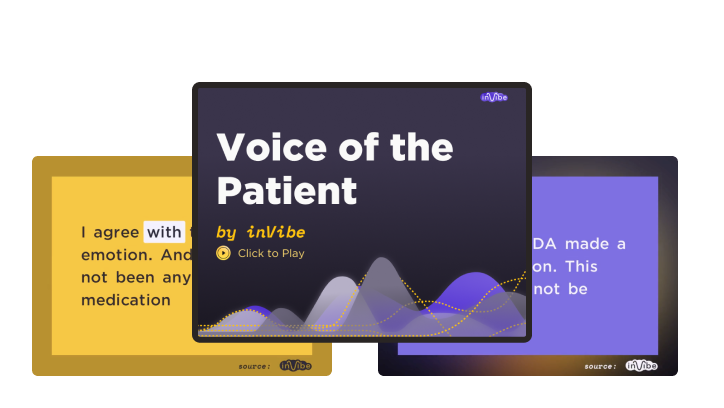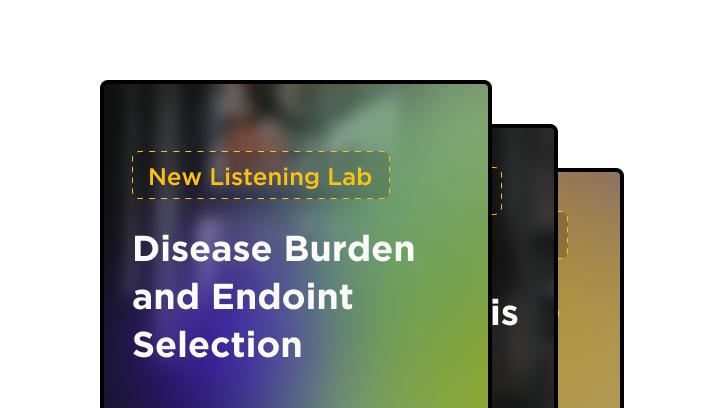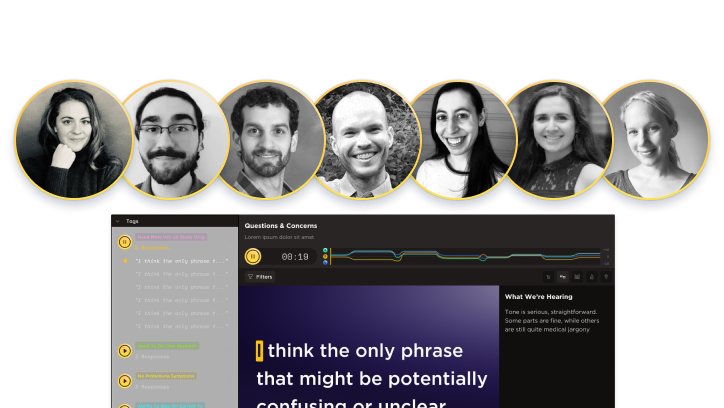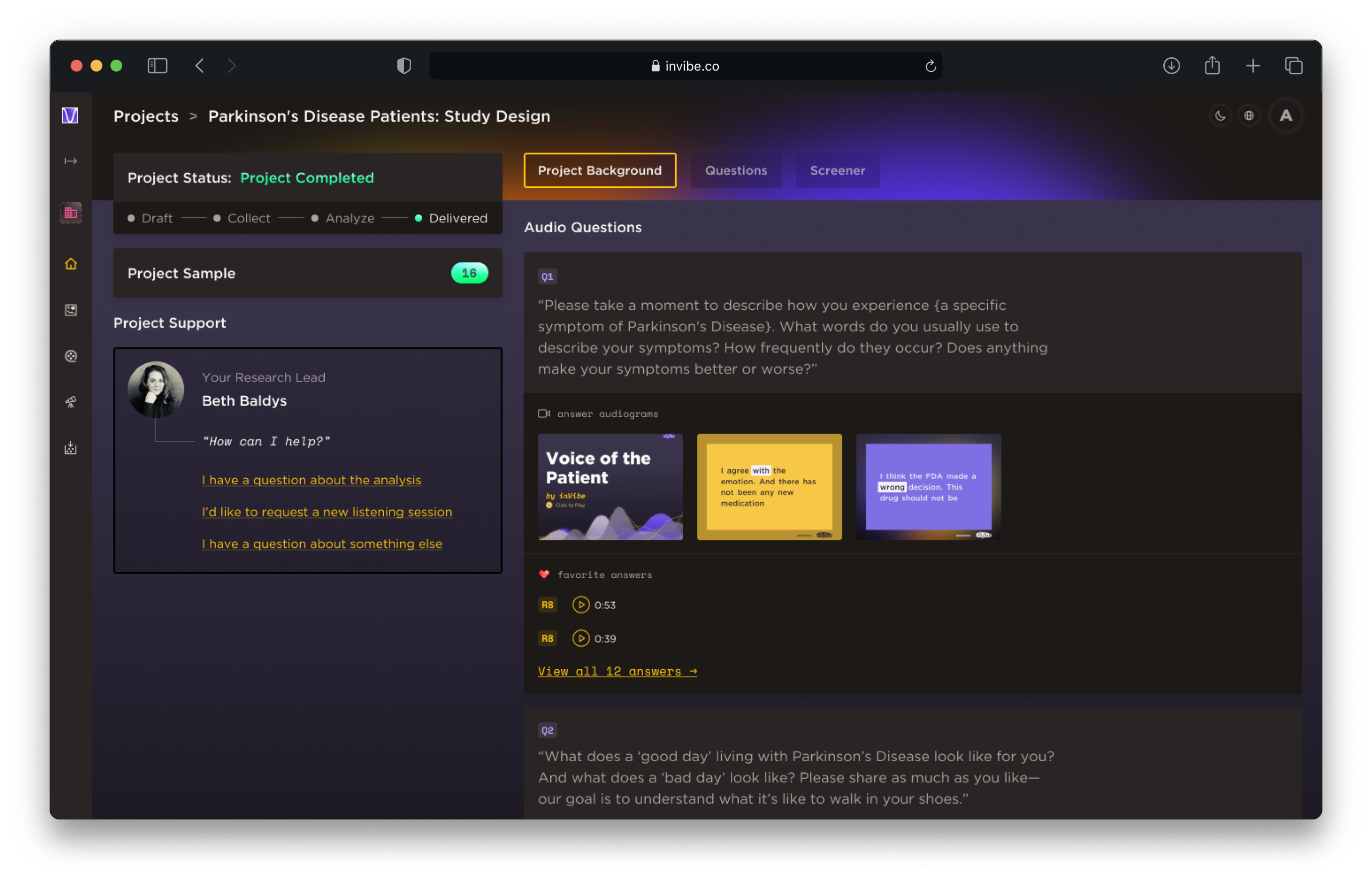Use Case
TrialPulse — Disease Burden and Endpoint Selection
Case Study
Listening to the Patient Voice to Understand Disease Burden and Inform Patient-Centric Study Design
Client Goal
Our client was in the process of developing a Phase II Parkinson’s Disease study. In order to support a truly patient-centric study design, the client wished to listen to patients impacted by PD movement disorders in order to: a) understand disease burden, and; b) inform both study endpoint selection and overall design.
Objective 1
Gain a better understanding of the disease burden and unmet needs of Parkinson’s Disease patients and caregivers
Objective 2
Obtain patient feedback and recommendations on the initial design and key study parameters of the proposed Phase 2 clinical study
The inVibe Solution
inVibe’s TrialPulse solution allowed our pharmaceutical client to quickly and efficiently deploy a voice-powered research study to better understand disease burden and unmet needs to inform study design.
1. Collect
Within a few days, inVibe screened and recruited 20 patients (and their loved ones), who were diagnosed with Parkinson’s Disease, and aligned with the inclusion/exclusion criteria of the proposed trial. The participants participated in an automated phone interview on their computers or smart phones, responding to questions by speaking.
Key Questions
/
Disease Burden
Q1
Please take a moment to describe how you experience {a specific symptom of Parkinson's Disease}. What words do you usually use to describe your symptoms? How frequently do they occur? Does anything make your symptoms better or worse?
Q2
What does a ‘good day’ living with Parkinson’s Disease look like for you? And what does a ‘bad day’ look like? Please share as much as you like—our goal is to understand what it’s like to walk in your shoes.
Key Questions
/
Study Design
Q1
During the {#} weeks of the clinical trial, you would be asked to make {#} visits to the clinic, each lasting {#} hours, as well as have {#} of check-ins with a doctor over the telephone. What are your overall reactions to these requirements, and how willing would you be to complete these responsibilities?
Q2
What do you see as potential downsides or challenges to participating in this trial (if any)? Do you imagine any difficulties with swallowing {#} capsules once every day for {#} weeks?
2. Analyze
inVibe’s analysts leveraged their language expertise and advanced NLP tools to process, evaluate and analyze multiple aspects of each response, including content, language, and emotion derived from speech-emotion recognition, allowing for deeper insights, faster.
What is Said
Summarize and categorize the content and themes.
How it’s Said
Identify the language patterns and construction.
How it Sounds
Utilize machine learning and acoustic technology to assess the emotionality.
3. Deliver
The client was provided with an interactive report via an online dashboard, along with the voice data, transcripts, and a high-level analysis. An in-house analyst walked the client through the most meaningful data, supporting each insight with specific voice data.
Audiogram
Videos
Clients have access to drag & drop tools to instantaneously create kinetic text animations from transcripts for internal sharing.

Listening
Labs
inVibe delivers self-guided interactive stories assembled from transcripts, audio, and charts – annotated with high-level expert observations.

Expert
Perspective
inVibe’s team of in-house analysts and language experts walk clients through the insights and recommendations derived from the research.


Key Insights & Recommendations
Based on the insights, inVibe recommended that the team take strategic actions:
#1
Patients reported that it was more important to them (their unmet need) that a future treatment addressed {X} aspect of {a specific} Parkinson’s Disease symptom. Thus informing the client’s conceptual model of symptom impact.
#2
Patient Reported Outcomes (PRO) assessments that include not only physical, but also emotional measurements, should be included. Thus informing study design.
#3
Assist patients in definitively assessing whether their participation is feasible by providing robust logistical information about trial location, transportation, and compensation.
Where are they now?
Our client used the research to better understand disease burden, help inform study endpoint selection, and update their conceptual model of symptom impact — ultimately designing a truly patient-centric study.
They will also continue to engage with patients throughtout the clinical development continuum to further validate and finalize the study design, identify participation barriers, design the recruitment plan, validate patient-facing materials, and more.
Ready to learn more?
/voice
/resources
/use-cases
- New Data Intelligence
- TrialPulse — Evaluation of Clinical Trial Recruitment Assets
- Concept / Message Testing
- Customer Journey Inflection Points
- Agency Pitch for New Business
- TrialPulse — DCT Design and Informed Consent
- Language of Disease
- Customer Stories
- Decision Drivers
- Market Trends
- TrialPulse — Disease Burden and Endpoint Selection
- HCP – Patient Communication
2025 inVibe - All Rights Reserved
